Omega Seamaster 1948 Limited Edition now in Platinum
The vintage-inspired Omega Seamaster 1948 gets a luxurious touch.
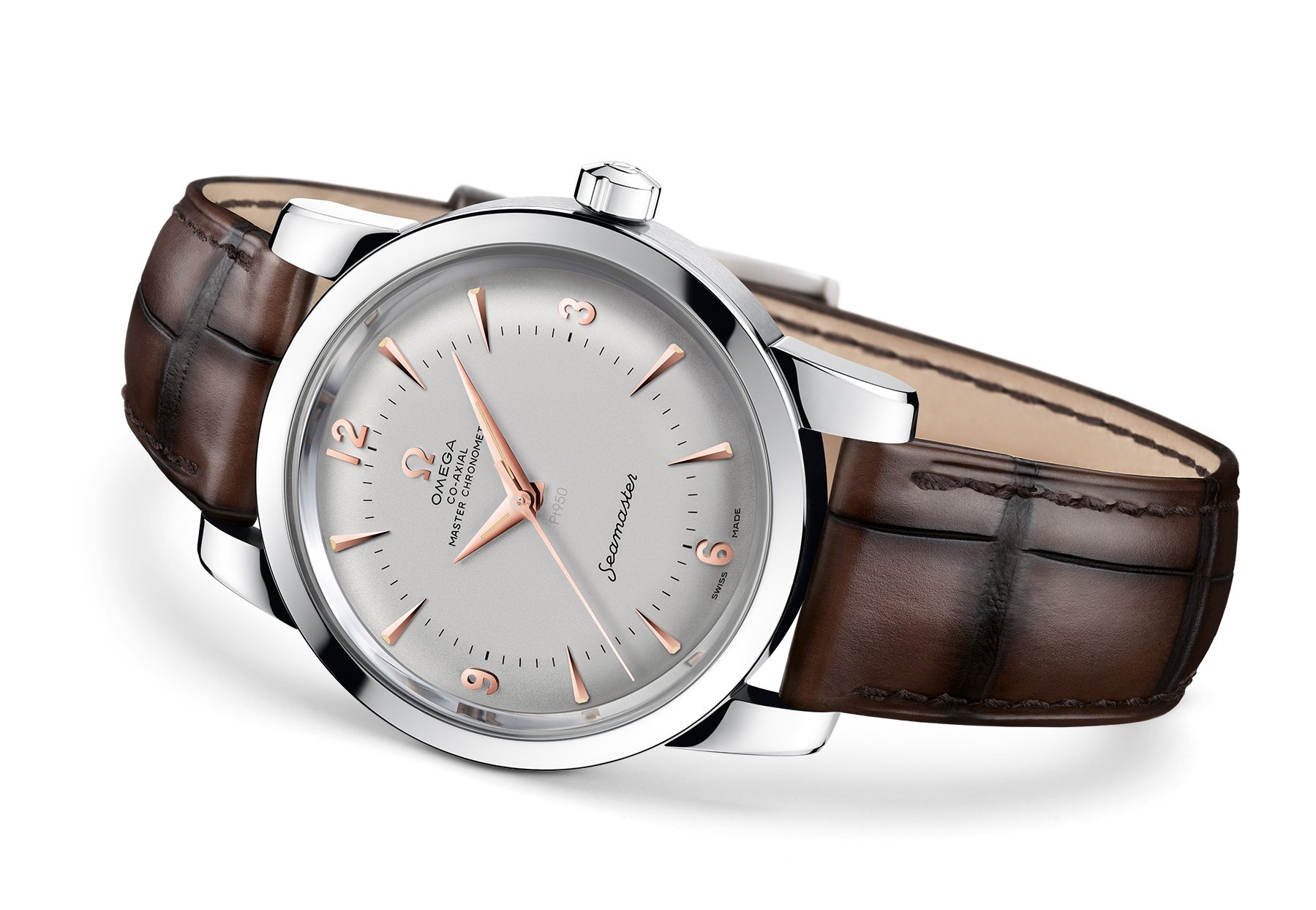
This year Omega celebrated the 70th anniversary of one of its two emblematic collections, the Seamaster. Born in 1948, made waterproof thanks to the experience acquired with military watches but in a civilian and rather elegant way, the early Seamasters were still gentlemen’s watches – and not the robust, professional tools that most of us know today. At Baselworld 2018, the brand presented an extremely faithful commemorative pair of watches – the 1948 Seamaster Limited Edition – and now we have a more luxurious, highly exclusive version, which has made it to the collection. Meet the Omega Seamaster 1948 Limited Edition now in Platinum.
Background
The story behind the Seamaster collection is strongly linked to military watches. Between 1940 and 1945, OMEGA delivered more than 110,000 timepieces to the British Ministry of Defence (MoD) for use within the Royal Air Force and its other branches. These watches were valued for their precision, water-resistance and reliability in combat. The end of the war left Omega with great knowledge and experience in manufacturing precise, reliable, water-resistant timepieces. The brand responded to demand for a timepiece containing the same robust technology and reliability, but more aesthetically suited to civilian life. The Seamaster was born in 1948.
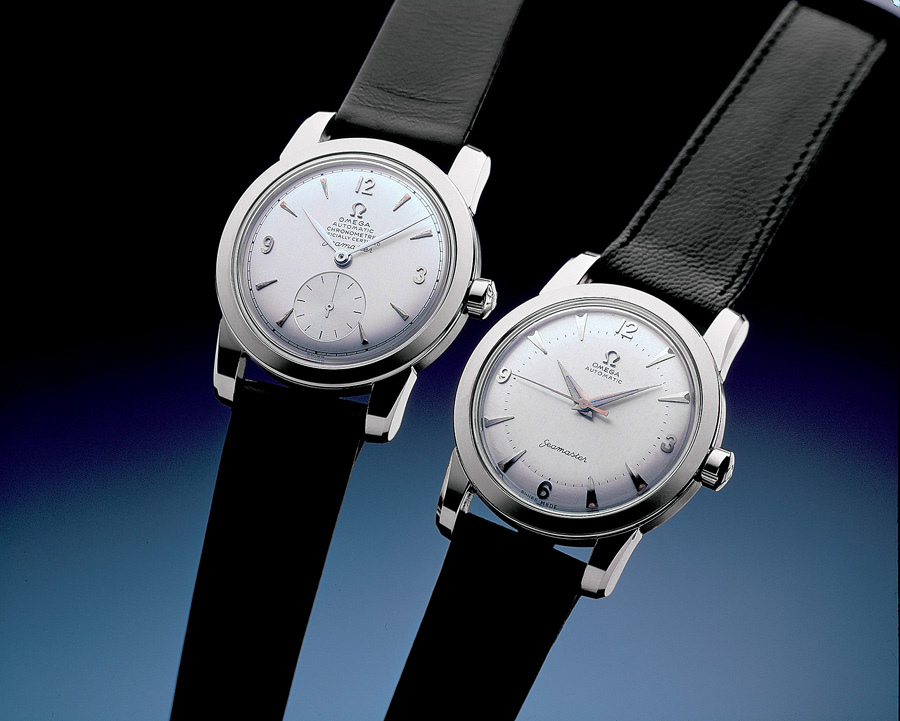
Launched in 1948, the Seamaster was the first proper family of watches designed by Omega. Even though conceived on the base of WWII military watches, the inaugural Seamaster pieces were beautifully designed and suitable for civilian use. Yet, they were given greater water-resistance than their military counterparts thanks to Omega’s novel use of the O-ring gasket technology. Two versions were available: a small seconds with leaf hands and a model with central seconds and dauphine hands.
The two watches have been revamped in modern limited editions for the Omega Seamaster 1948 70th Anniversary Collection – two watches that were introduced at Baselworld 2018 and that we reviewed here. Aesthetically speaking, the Omega Seamaster 1948 Limited Editions were extremely faithful to the original. Certainly not as compact as before, the proportions remained very much on the reasonable side, with a 38mm case. But if the looks are identical, the technology is all about the 21st century.
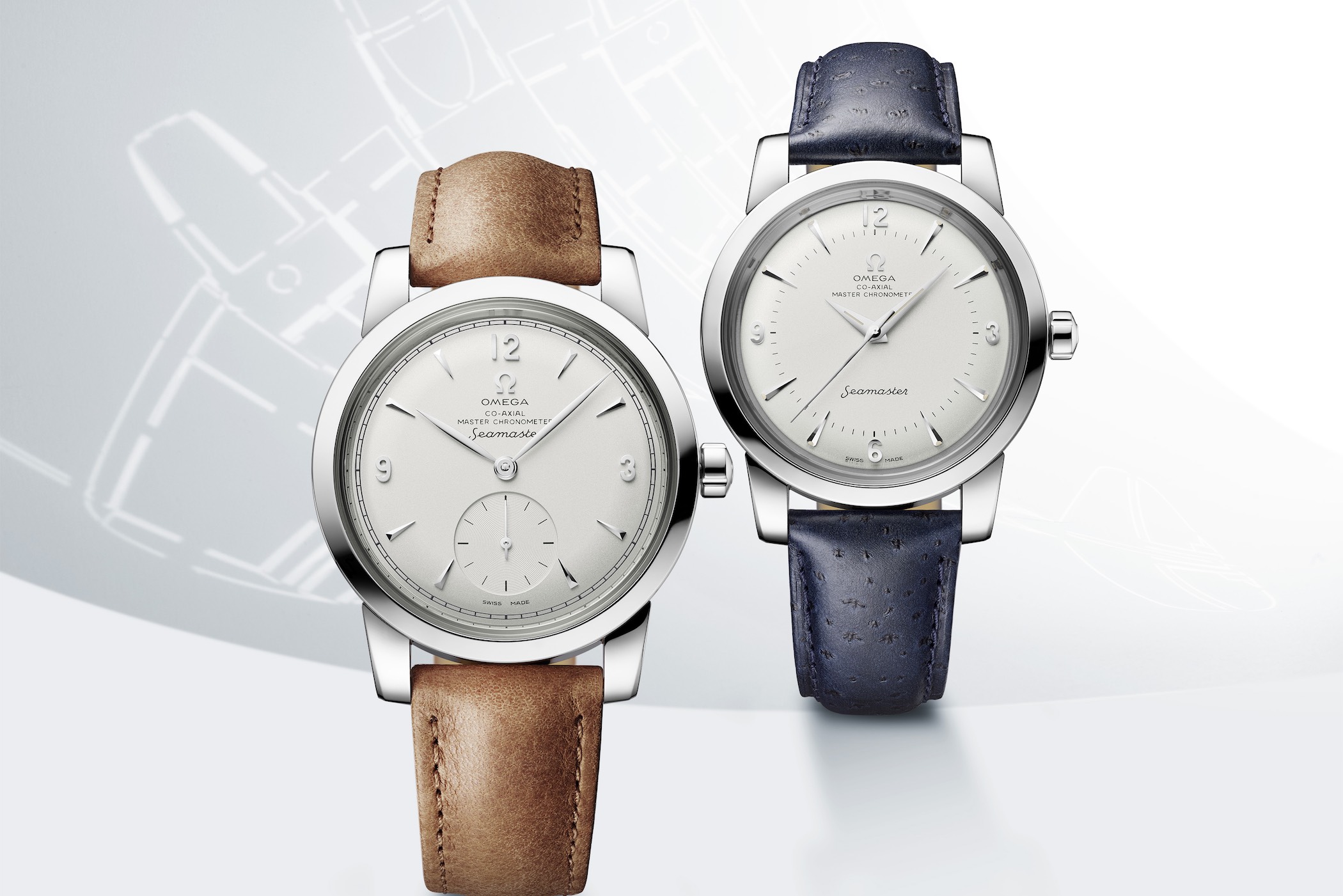
As for the inaugural watches launched in 1948, Omega presented two versions: one with small seconds (a bit dressier) and one with central seconds. Differences can be seen on the minutes track, the shape of the hands and, of course, on the movement side – a similar base but with different gear trains due to the different seconds display. Originally crafted in steel and available in 1,948 pieces each, the collection is about to receive some new flagships, with highly exclusive platinum models.
The new Omega Seamaster 1948 Limited Edition Platinum
Besides the change of material for the case, the evolutions of these new platinum editions of the Omega Seamaster 1948 are subtle and the overall vintage-oriented design, so close to the original 1948 model, hasn’t been altered.
First and foremost, the cases are now crafted from 950 Platinum – meaning a much denser watch on the wrist. However, the dimensions are the same: a 38mm diameter and 11.20mm (central seconds) or 11.65mm (small seconds) in height. The small seconds version, due to the addition of a few wheels to transfer the seconds from the centre to the 6 o’clock position, is slightly thicker. The cases of the platinum versions retain the same finishing, with mostly polished surfaces and brushed casebands. The straps are also different, and are now made of green or brown alligator skin.
One the back, we find back the same transferred decoration: a Chris-Craft boat and a Gloster Meteor aircraft, a tribute to the aviators and mariners who once relied on Omega’s watches. Even though the material has changed, these watches remain water-resistant to 60m – sufficient considering the rather dressy vocation of these pieces, especially in a noble material. The caseback has the typical patented “NAIAD LOCK” system, with all the inscriptions and decoration perfectly aligned.
Inside the cases of these Omega Seamaster 1948 Limited Edition Platinum are the same movements used in the steel versions, however with a solid Sedna gold rotor and balance bridge (something that is always the case with precious metals watches at Omega). The automatic Calibre 8806 (central seconds) and Calibre 8804 (small seconds) are in-house developed and manufactured and feature the METAS/Master Chronometer certification. They are anti-magnetic and very precise, as expected.
Along with the new material, these Omega Seamaster 1948 Limited Edition Platinum feature several small updates on the dials. First of all, they are made in Platinum too (as suggested by the Pt 950 inscription below the hands’ axle) and have a metallic, grained colour. Indexes and hands are the same but the small seconds version has yellow gold accents while the central seconds features rose/Sedna gold details.
Price and availability
The Omega Seamaster 1948 Platinium Limited Editions are available in limited editions of 70 pieces. The Ref. 511.93.38.20.99.001 with small seconds is priced at CHF 39,500 and the Ref. 511.93.38.20.99.002 central seconds is priced at CHF 39,000. More details on omegawatches.com.

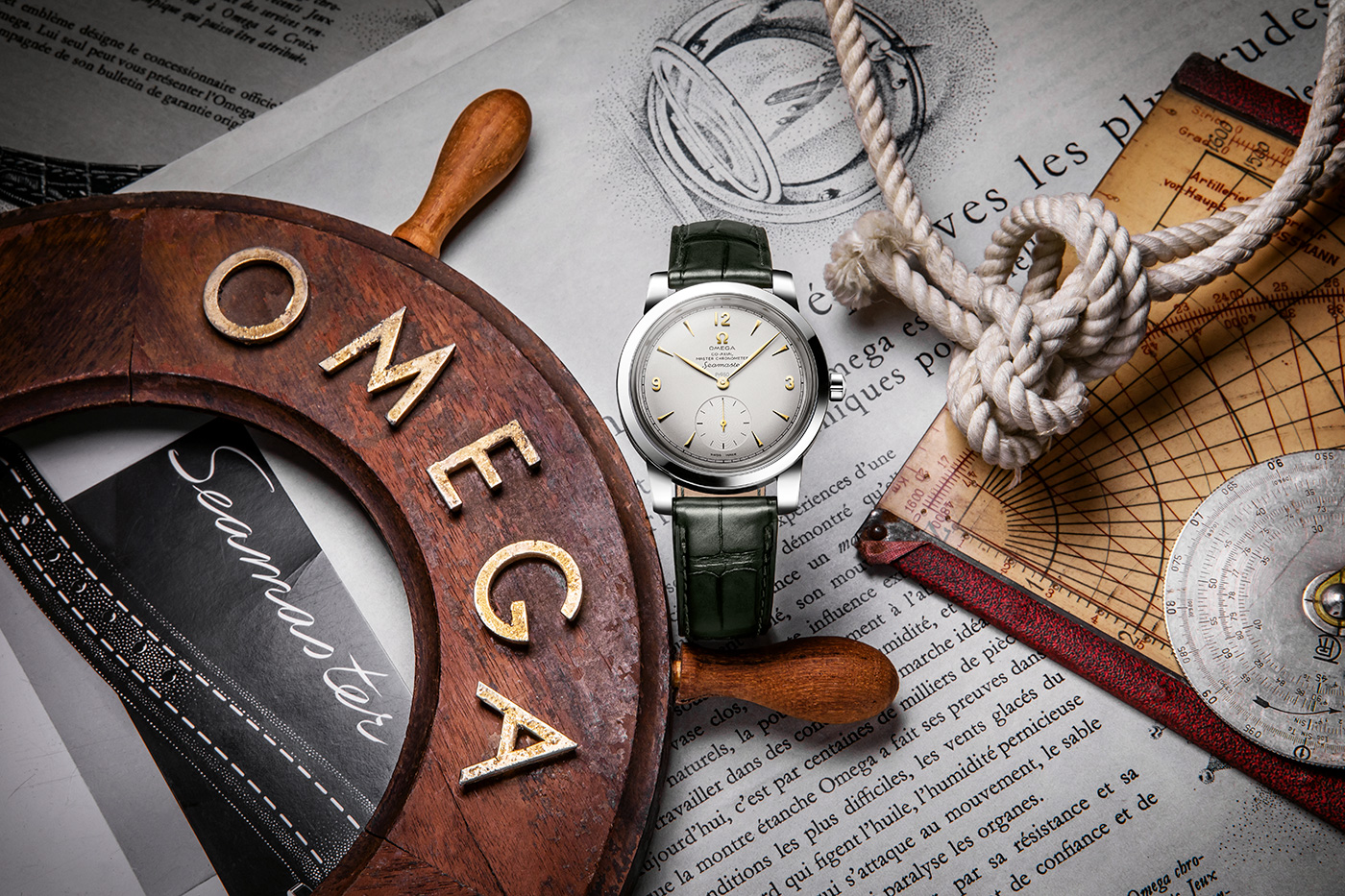
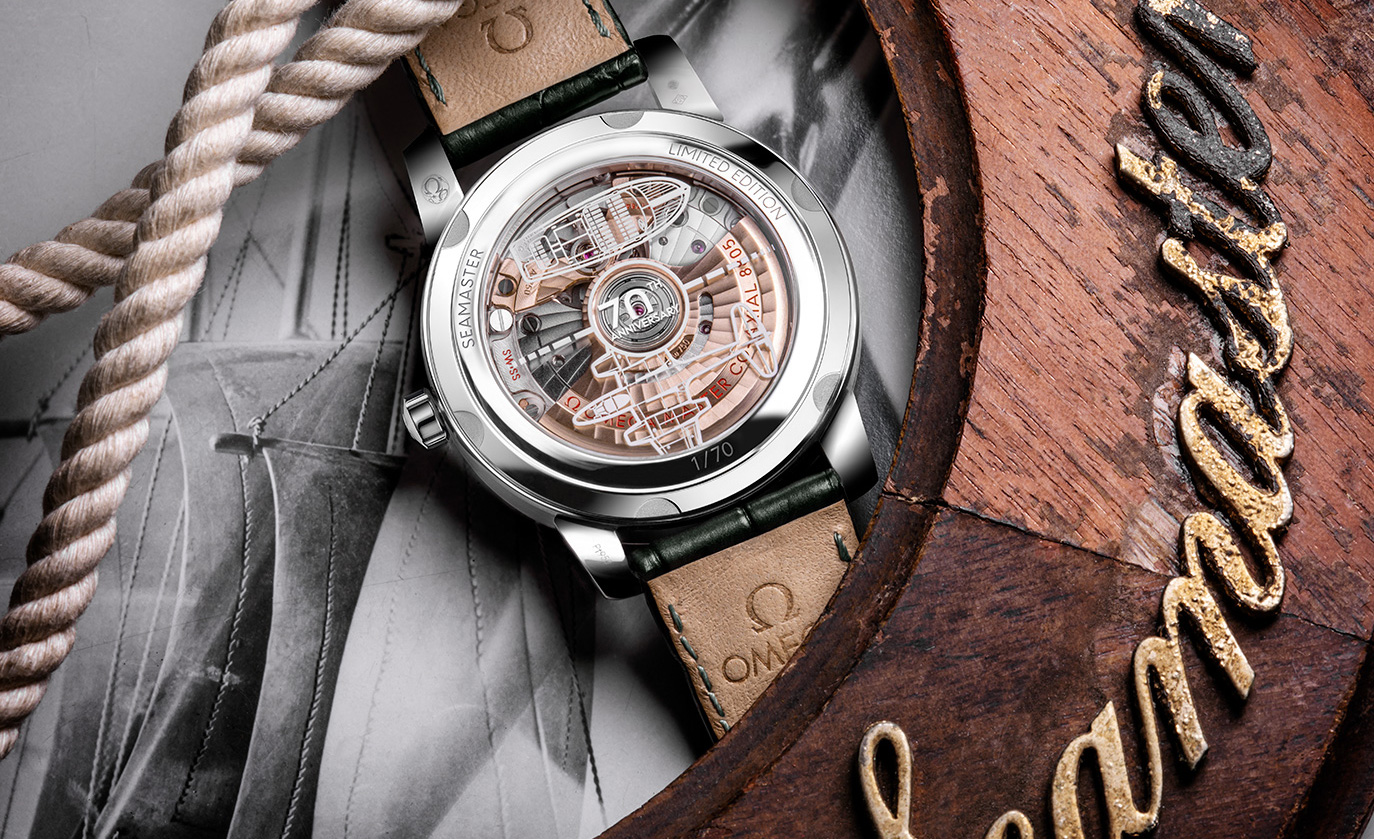




3 responses
Got a problem. To my knowledge, the small seconds calibre is usually thinner than the central one due to the mechanism. Would you explain more ?
You’re correct Baphomet, the small second calibre can be a tiny bit thinner, because the second hand does not have to be moved. The necessary bridge and additional gears, to add a central second hand, would add a few (1-2) millimeter.
You’re right, Baphomet, but that only applies to the old omega movement as the fourth wheel that usually fitted with the second hand is used to be on the bottom side of the dial, hence the subsecond. But on the modern movement from omega such as this one, the architecture and the array of the wheels inside the movement are made so the fourth wheel is located on the center of the watch, to, well… cut the additional cost of manufacturing additional bridges and wheels for the central second hand like it used to. Now, the subsecond hand attached to additional wheels right below the dial with another additional bridges as well, hence the price difference which subsecond hand version is notably more expensive (in standard version) compared to the central second.